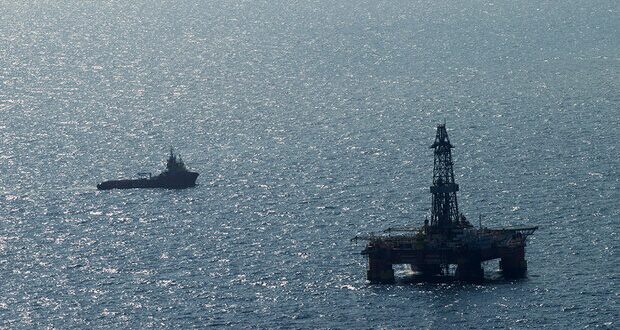In recent months, a series of analytical publications sparked fresh debate in Iran about the status of Iran’s oil and natural gas reserves in the Caspian Sea as well as why it has still not taken greater efforts to exploit those resources. Namely, a piece in August predicted that a newly discovered offshore gas field—the so-called “Chalous Superstructure”—might be large enough to permit northern Iran to become a regional hub and start providing 20 percent of Europe’s gas needs (Kepco.ir, August 8). But separate analysis published the same month claimed that, based on a 20-year deal between Iran and the Russian Federation, Tehran was not in a position to engage in hard negotiations with the Kremlin regarding Iran’s share of Caspian offshore energy resources (Oil Price, August 19). A recent interview with Ardeshir Dadras, the president of Iran’s Syndicate of Compressed Natural Gas, seemed to echo that argument: “Iran and Russia had agreed that tapping the Iranian gas fields in the Caspian Sea would only be possible if Iran’s demand for gas exceeds its output. According to the agreement, Iran does not have the right to extract from eight large Caspian Sea gas fields located in Iranian waters” (ILNA, November 1).
Together, these articles provoked sharp anti-Russian feelings inside Iran. To try to calm the situation, the Iranian embassy in Moscow denied that the Russian side had been hindering Iran’s offshore oil and gas exploitation; and Khazar Exploration and Production Company (KEPCO), which has been assigned to the Chalous field project, reiterated that denial. Moreover, Iran’s top envoy to Moscow, Kazem Jalali, said, “Over the 20 months that I have served as ambassador in Russia, there had been no such issue. Unfortunately, some reports are published in the media space from time to time to influence Iranian-Russian relations” (ILNA, November 3). But assuming Ambassador Jalali’s dismissive comments are true, a serious question still remains: Why is Iran not exploiting oil and gas resources in the Caspian Sea? Four main factors seem to offer an explanation.
The first reason is the great depth of Iran’s littoral waters compared to the shallow depths of the “upstream” Caspian Sea countries, namely Turkmenistan, Azerbaijan and Kazakhstan. In fact, most of the oil and gas fields that have been exploited in the Caspian Sea so far have been located in shallow waters. Only the second phase of the development of the Shah Deniz gas field in the Republic of Azerbaijan, found at a depth of 300–400 meters, is considered a deep-water reserve. According to Ali Osuli, a former managing director KEPCO, studies over the last two decades have identified 46 small and large oil structures (fields) at depths between 500 and 800 meters, with combined reserves of 48 billion barrels of oil and gas (Javan Online, August 25). The great depth of Iranian waters in the Caspian Sea, similar to the situations found in the Gulf of Mexico and the North Sea, thus imposes difficult technical conditions on Iran, requiring the construction and installation of specialized deep-water drilling rigs. Such equipment requires high capital and the latest sophisticated technologies—a serious issue for Iran’s sanctioned economy. In contrast, Iran does not face such problems in the shallow littoral waters of the Persian Gulf, in the south.
As alluded to above, the second major impediment is the United Nations Security Council’s sanctions on Iran (adopted during 2006–2015) and the unilateral sanctions imposed by the Donald Trump administration following the withdrawal of the United States from the Joint Comprehensive Plan of Action (JCPOA) on the Iranian nuclear program. These sanctions have had a highly negative impact on the Islamic Republic’s economy, especially in the oil and gas sector, which is in dire need of foreign investment. According to KEPCO, $12 billion is needed to drill more than 12 oil wells in the Caspian Sea that, in a 25-year period, would allow Iran to pump at least 125,000 barrels of oil per day (Khabar Online, November 3). But naturally, the difficult economic conditions caused by international sanctions have prevented Iran from making such heavy energy-production infrastructure investments in the deep and costly waters of the southern Caspian.
The third obstacle is the existence of Iranian oil and gas infrastructure and facilities in the southern provinces of Iran, such as Khuzestan and the coastal areas along the Persian Gulf, which have been developed over the past one hundred years. The lower financial cost of exploiting terrestrial as well as shallow-water reserves in the Persian Gulf, combined with the existence of oil terminals and gas transmission lines for international export via the nearby seaports of southern Iran, has resulted in natural economic and investment focus there over other areas. The Caspian Sea, on the other hand, is not economical for Iran. In this respect, the situation in Iran is quite similar to Russia, which also has not found investing in oil and gas in the Caspian basin particularly affordable or economically justified. That is why the other three Caspian littoral states, the Republic of Azerbaijan, Kazakhstan and Turkmenistan, have been the most active players for the last three decades.
The fourth problem has been the uncertainty of the legal regime of the Caspian Sea, particularly prior to the signing of the Convention on the Legal Regime of the Caspian Sea in August 2018. Until then, Azerbaijan, Turkmenistan and Kazakhstan sought to exploit Caspian oil and gas resources unilaterally or based on bilateral agreements, which Tehran had routinely criticized. But despite the signing of the Convention, the document must still be approved by the five littoral states’ national legislatures. So far, only the parliaments of Russia, Azerbaijan, Kazakhstan and Turkmenistan have ratified the Convention, whereas the Iranian government has yet to send the draft law to the Islamic Consultative Assembly. Until the text of this treaty is approved by Iranian lawmakers, it cannot be legally implemented by any of the five Caspian states (Kremlin.ru, August 12, 2018). Moreover, since negotiations on the determining the “baselines” of the Caspian Sea have not yet been concluded, Iran’s share in the Caspian Sea—especially the parts of the bed and sub-bed, where oil and gas resources are located—is not exactly known (see EDM, June 3, 2021).
Consequently, Iran has for now limited itself to conducting reconnaissance and exploratory operations in the Caspian Sea rather than undertaking production efforts. Until the five-party negotiations on determining “baselines” wrap up and the Caspian Convention is ratified, Tehran will continue to exercise its sovereignty over the areas it has laid claim to.
 Eurasia Press & News
Eurasia Press & News




